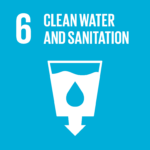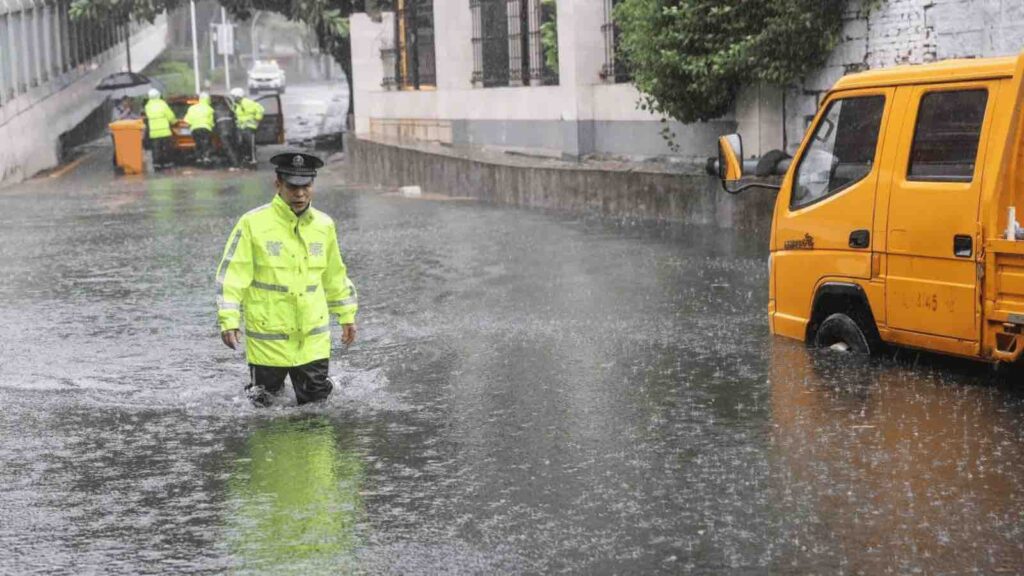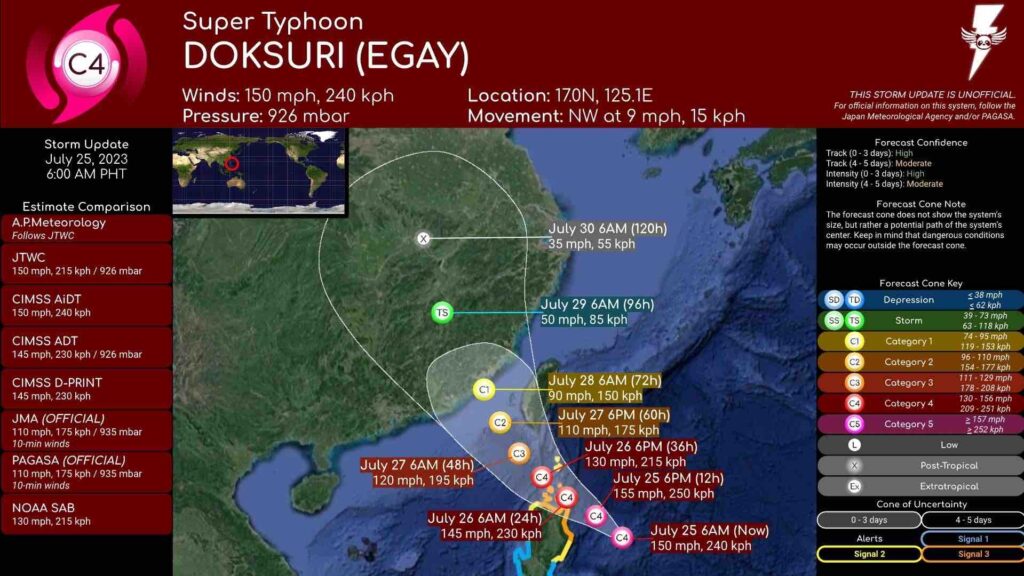Typhoon Doksuri, known as Typhoon Egay in the Philippines, has left a swath of devastation across multiple countries in Southeast Asia, severely impacting the Philippines and Taiwan before storming its way into China’s southeastern coast.
The monstrous typhoon crashed into China’s coastal Fujian province around 10:00 a.m. local time, according to the National Meteorological Center. Xinhua, the Chinese state news agency, reports that Doksuri affected over 724,600 people and necessitated the evacuation of more than 416,000 in Fujian. At the time of landfall, the winds were a formidable 175 kilometers per hour (108 mph), as confirmed by the Joint Typhoon Warning Center.
RELEVANT SUSTAINABLE GOALS



Typhoon Doksuri’s Devastation
Typhoon Doksuri, known locally as Egay, has underscored the rising threat of intensifying storms in a rapidly changing climate. As the tempest slashed through Southeast Asia, it has left an indelible mark on the Philippines, Taiwan, and mainland China, leading to a trail of devastation and a grave reminder of the increasing challenges brought on by climate change.
Making landfall in China’s southeastern Fujian province and Taiwan, Doksuri has uprooted life for over 724,600 people. Chinese authorities have evacuated more than 416,000 in Fujian alone, with wind speeds at landfall recorded at a terrifying 175 kilometers per hour (108 mph). Businesses, factories, and schools across China’s coastal cities shuttered their doors as the typhoon unleashed its fury.
In Taiwan, the effects of the typhoon have been dire, causing one death, injuring 68 people, and leading to widespread power cuts affecting around 278,182 households. Over 200 domestic and international flights were delayed or canceled in the country as the storm advanced.
Earlier in its trajectory, Doksuri tore through the Philippines’ most populous island of Luzon, causing at least 39 deaths, including dozens who were aboard an overcrowded boat that capsized in strong winds.
According to state media, Doksuri has caused direct economic losses amounting to 52.27 million yuan ($7.3 million), primarily impacting farmland. As the storm continues its path, Taiwan, though no longer under the highest rainfall warning, is still grappling with heavy rains.
The El Nino Effect and Predictions
This grim event coincides with forecasts from Taiwan’s Central Weather Bureau (CWB) predicting stronger typhoons this year due to the El Nino effect. Taiwan typically experiences three to five typhoons from June to December. However, warmer ocean temperatures near the equator resulting from El Nino could escalate the strength of these typhoons.
About 21 to 25 typhoons typically form in the second half of the year, and three to five affect Taiwan. However, El Nino patterns mean they tend to form farther to the east, traveling over longer stretches of ocean and gaining strength upon approach to arrive as moderate to intense events.
Before reaching Taiwan and China, Doksuri had already caused extensive damage in the Philippines, with Luzon Island being the hardest hit. A tragedy unfolded on Thursday when a boat overcrowded with at least 66 people capsized near Talim Island, leading to the loss of 26 lives. Coast guard spokesperson Rear Adm. Armand Balilo confirmed plans to file a complaint against the boat’s captain and operator.
Elsewhere in the Philippines, Doksuri claimed 13 more lives, according to the National Disaster Risk Reduction and Management Council. The typhoon triggered floods in five regions and numerous rain-induced landslides.
The catastrophic path of Typhoon Doksuri through the Philippines, Taiwan, and China underscores the urgent need for effective climate change mitigation and disaster response strategies. As the recovery and rebuilding efforts continue, the resilience of the people in these regions will undoubtedly be tested in the face of such a formidable natural disaster.
A police officer walks through a flooded street after Typhoon Doksuri made landfall in Xiamen on Friday, in China’s eastern Fujian province. AFP via Getty Images
You may also be interested in :
Weathering The Storm : Asia’s Battle Against Monsoon Season & Extreme Weather




